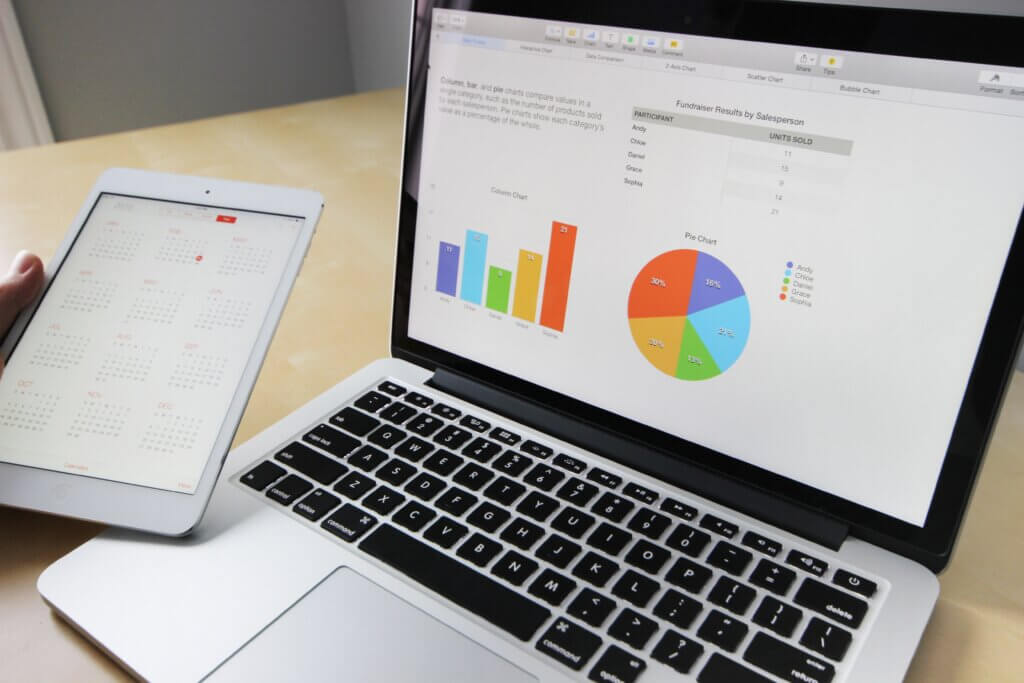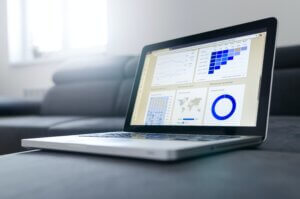Key Takeaways
- Gain a comprehensive understanding of the vital role that data visualization plays in healthcare, from improving patient outcomes to identifying operational inefficiencies and ensuring data security.
- Learn about the various types of data visualization methods and tools available for healthcare apps, allowing you to make informed decisions when selecting the best options for your organization.
- Acquire insights into the challenges that healthcare organizations face in visualizing data, such as compliance with regulations and data security, and how to overcome them for effective data visualization.

Comprehensive Guide to Leveraging Data Visualization for Optimal Healthcare Outcomes for Healthcare Apps
In the fast-paced and ever-evolving landscape of healthcare, the importance of data has skyrocketed like never before. From tracking patient outcomes to improving hospital operations, data serves as the backbone for informed decision-making. However, raw data in itself can be overwhelming and difficult to interpret. That’s where data visualization comes in. By converting complex data sets into easy-to-understand graphical formats, healthcare providers can glean actionable insights more swiftly and efficiently.
Data visualization isn’t just a nice-to-have feature but an essential tool that can impact patient outcomes, streamline operations, and even detect fraud. But choosing the right type of data visualization for your healthcare app isn’t straightforward. It requires a careful evaluation of the benefits, challenges, types, and tools available in this specialized field.
This comprehensive guide aims to illuminate the path for healthcare organizations, mhealth developers, and decision-makers. We will delve into the various benefits of employing data visualization, tackle the challenges organizations face, explore different types of data visualizations that can be implemented in healthcare apps, and look at some of the best tools in the market for this purpose.
Whether you’re a healthcare professional seeking to improve patient care or a developer working on the next breakthrough healthcare app, understanding how to leverage the power of data visualization can make all the difference.
Benefits of Data Visualization For Healthcare Apps
Data visualization offers a multitude of benefits in healthcare, a sector known for its complexity and high stakes. The effective use of visual data can impact everything from patient outcomes to operational efficiencies. Below, we delve into some of the most compelling benefits of data visualization in healthcare applications.
Improved Patient Outcomes
 One of the most vital applications of data visualization in healthcare is improving patient outcomes. When healthcare providers have access to easily interpretable, visual data, it speeds up decision-making and aids in more accurate diagnoses. For example, visual representations can help doctors quickly understand the nuances of a patient’s medical history, allowing them to formulate more personalized and effective treatment plans. With lives often hanging in the balance, the quicker and more precise interpretation facilitated by data visualization can indeed be a life-saver.
One of the most vital applications of data visualization in healthcare is improving patient outcomes. When healthcare providers have access to easily interpretable, visual data, it speeds up decision-making and aids in more accurate diagnoses. For example, visual representations can help doctors quickly understand the nuances of a patient’s medical history, allowing them to formulate more personalized and effective treatment plans. With lives often hanging in the balance, the quicker and more precise interpretation facilitated by data visualization can indeed be a life-saver.
Identifying Health Trends Early On
The ability to detect health trends early can be invaluable, particularly when dealing with infectious diseases or chronic conditions. Data visualization can turn voluminous data sets into clear, comprehensible formats, allowing healthcare providers to recognize emerging patterns. These patterns can range from increases in specific diagnoses in particular geographical areas to spikes in medication use, allowing providers to take timely preventative measures or allocate resources where they are needed the most.
Fraud Detection
Fraud is an unfortunate reality in healthcare, with billions lost annually due to fraudulent billing or treatment claims. Sophisticated data visualization tools can sift through enormous volumes of billing records and patient data to identify unusual patterns that may indicate fraudulent activities. By catching these anomalies early, healthcare organizations can save significant resources and ensure that finances are directed where they are genuinely needed — patient care.
Cost-Saving Opportunities
Healthcare providers operate under constant budget constraints, making cost-saving measures essential. Visual analytics can go beyond patient care to reveal inefficiencies in operational aspects like resource allocation, staffing, and inventory management. By identifying areas of wasteful spending or inefficient resource use, healthcare organizations can reallocate funds and resources more judiciously, ultimately leading to better patient care and more efficient operations.
Better Performance By Minimizing Process Inefficiencies
Operational efficiency is crucial for the smooth running of any healthcare facility. By visualizing workflow data, it becomes easier to identify bottlenecks, delays, and other process inefficiencies that can impede patient care and drive up costs. With these insights in hand, healthcare providers can implement targeted solutions, whether it’s streamlining admission procedures or optimizing staffing schedules, thereby improving overall performance and patient satisfaction.
By harnessing the power of data visualization, healthcare organizations can significantly enhance various aspects of their operations, ultimately leading to better patient outcomes and more efficient use of resources
Challenges Healthcare Organizations Face in Visualizing Data
While data visualization offers numerous advantages for healthcare organizations, implementing it effectively presents its own set of challenges. Let’s explore some of the obstacles faced by healthcare providers in adopting this powerful tool.
Data Privacy
 One of the most critical issues is the privacy and security of patient data. Regulations like HIPAA (Health Insurance Portability and Accountability Act) in the United States impose stringent rules on how patient information can be stored and displayed. A failure to comply with these rules can lead to hefty fines and can seriously erode trust between patients and healthcare providers.
One of the most critical issues is the privacy and security of patient data. Regulations like HIPAA (Health Insurance Portability and Accountability Act) in the United States impose stringent rules on how patient information can be stored and displayed. A failure to comply with these rules can lead to hefty fines and can seriously erode trust between patients and healthcare providers.
Complexity of Healthcare Data
Healthcare data is often intricate and multifaceted, involving numerous variables like medical histories, lab results, and more. The complexity of this data can make it challenging to create visualizations that are both accurate and easily interpretable by healthcare professionals, potentially leading to misunderstandings and errors.
Technical Skill Required
Data visualization is not simply about generating graphs and charts; it’s an art that requires a deep understanding of both the data being visualized and the audience interpreting it. Many healthcare providers may not have the technical skills needed to create or interpret advanced visualizations, necessitating either training sessions or the hiring of specialized staff.
The Different Data Visualization Types For Healthcare Apps
Data visualization in healthcare apps can take on many forms, each with its own advantages and disadvantages. Below, we discuss some of the most commonly used types of data visualization in healthcare applications.
Interactive Websites and Widgets
Interactive websites and widgets allow users to manipulate data, enabling healthcare providers and patients to gain customized insights. For instance, a widget might allow a doctor to input various metrics to see how a change in treatment might affect patient outcomes. Similarly, patients could use interactive websites to monitor their health progress over time, creating a more engaged healthcare experience.
Interactive Dashboards
Dashboards are the go-to data visualization tool for real-time data analysis. They offer medical staff an immediate, at-a-glance overview of essential metrics and Key Performance Indicators (KPIs). For example, a dashboard in an Emergency Room could display current patient wait times, bed availability, and staffing levels, helping to manage resources effectively in real-time.
Infographics and Motion Graphics
Infographics and motion graphics are particularly useful for patient education. They can break down complex healthcare topics into digestible formats, aiding in effective communication between healthcare providers and patients. For instance, an infographic could illustrate the steps of a surgical procedure, or the risks and benefits of a particular medication, providing patients with clear and concise information.
Heat Maps
Heat maps serve as powerful tools for visually representing areas of concentration or patterns. They can show anything from the prevalence of a specific disease in different regions to the usage frequency of different healthcare facilities. Heat maps can help healthcare administrators identify trends and allocate resources more effectively.
By understanding both the challenges and the array of visualization options available, healthcare organizations can better position themselves to reap the benefits of this powerful tool. Each type of visualization offers unique advantages and may be more suited for specific kinds of data and objectives.
Special Considerations for Data Security
When it comes to healthcare, data privacy and security take center stage, making them essential considerations in the field of data visualization. The necessity for maintaining the confidentiality, integrity, and availability of sensitive healthcare information cannot be overstated. Let’s delve into some of the specific concerns and how they can be addressed.
Compliance with Regulations
In the healthcare sector, regulatory compliance is not an option but a mandatory requirement. Laws like HIPAA in the United States or GDPR in Europe set stringent guidelines on how patient data should be handled. When it comes to data visualization, healthcare organizations must ensure that their methods and tools are compliant with these regulations.
For instance, only authorized personnel should have access to visualized data, and it should be displayed in a manner that de-identifies patients unless it’s essential for treatment. Before choosing or developing a data visualization tool, healthcare providers should work closely with legal and compliance teams to ensure that their selected approach meets all regulatory standards.
Data Encryption
The importance of encrypting sensitive patient data during the visualization process cannot be overstated. While it’s essential to make data easily accessible and interpretable for authorized users, it’s equally crucial to protect that information from unauthorized access or breaches.
Encryption techniques can secure data both at rest and during transit. For instance, a secure SSL/TLS connection could be used to protect data being transferred for visualization. Likewise, the visualized data itself should be encrypted when stored, especially if it’s being cached for faster retrieval. Moreover, additional safeguards like multi-factor authentication can be implemented to provide an extra layer of security.
By keeping a tight focus on data security and regulatory compliance, healthcare organizations can ensure that their data visualization efforts not only yield insightful results but also uphold the highest standards of patient confidentiality and data integrity.
The Best Healthcare Data Visualization Tools
Selecting the right data visualization tool is a critical decision for healthcare organizations. A suitable tool should not only provide robust visualization features but also comply with data privacy regulations and industry standards. Here is a rundown of some of the best data visualization tools available for healthcare applications.
Tableau
Tableau is a leader in the data visualization industry, offering a range of advanced features tailored for healthcare settings. It supports a wide variety of data sources and provides exceptional flexibility in creating intricate visualizations. Its built-in security features can also help organizations stay in compliance with healthcare regulations like HIPAA. With capabilities like predictive analytics and natural language processing, Tableau allows healthcare providers to delve deep into their data for actionable insights.
Power BI
Microsoft’s Power BI specializes in offering real-time dashboards and report generation. Its real-time capabilities are especially useful in healthcare settings where quick decisions can make all the difference. With Power BI, healthcare organizations can keep track of crucial metrics, such as patient flow, bed occupancy rates, and equipment availability, all in real-time. The platform also offers excellent integration with other Microsoft products, making it easier for organizations already invested in the Microsoft ecosystem.
Domo
Domo provides cloud-based business intelligence tools that are highly adaptable to healthcare needs. The platform supports multiple data sources and allows users to create a variety of visualization formats, from charts and graphs to complex dashboards. Its cloud-based nature ensures that data is always accessible and up-to-date, allowing healthcare providers to make timely, data-driven decisions.
Looker
Looker focuses on business data analytics and offers solutions that are HIPAA-compliant. Its robust analytics engine and customizable data models make it a strong contender for healthcare organizations. The platform provides a user-friendly interface along with the ability to create advanced visualizations, making it suitable for both technical and non-technical users within a healthcare setting.
Plotly
Plotly is known for its interactive graphs and dashboards, making it an excellent choice for creating custom visualizations. Healthcare providers can benefit from Plotly’s interactive features, which allow users to zoom, pan, and hover over data points for more information. The tool supports a wide range of programming languages like Python, R, and JavaScript, offering flexibility to organizations with different technical capabilities.
Each of these tools offers its own unique features and advantages, making them suitable for various aspects of healthcare data visualization. The best tool for your organization will depend on specific needs such as data sources, compliance requirements, and the types of visualizations you aim to produce.
Choosing the right data visualization tools and methods is not just a matter of convenience or efficiency; it’s a critical factor in improving patient care, detecting health trends, mitigating fraud, and realizing operational efficiencies. In essence, the right visualization can save both time and lives.
Healthcare organizations must weigh various considerations such as data privacy, compliance, and the technical skill set required to manage these tools. But with the right strategy and the right tools—each chosen with a clear understanding of its benefits, limitations, and security features—healthcare providers can make strides in delivering more personalized, effective, and timely care.





